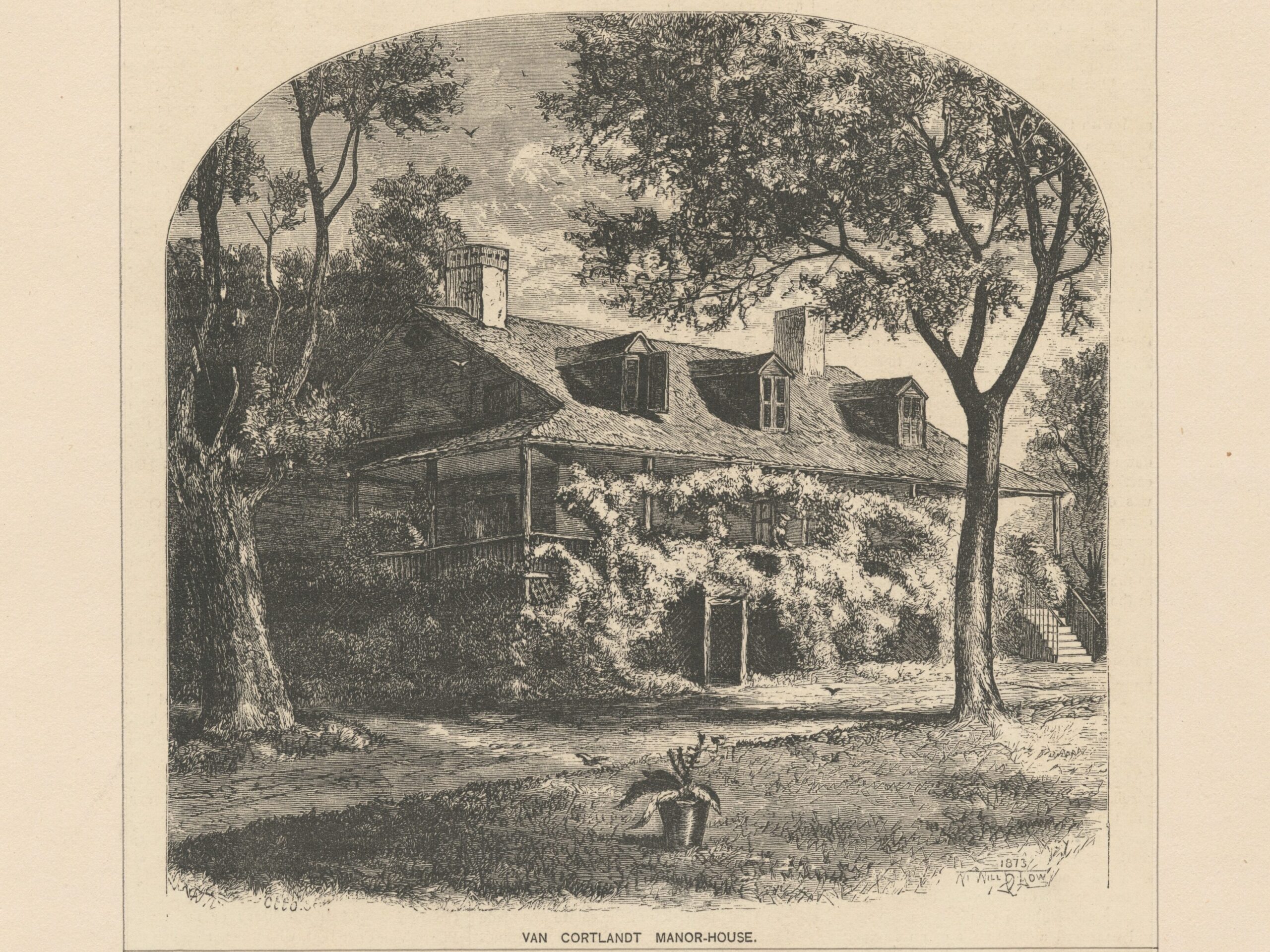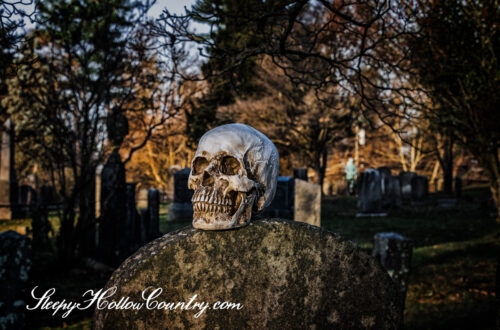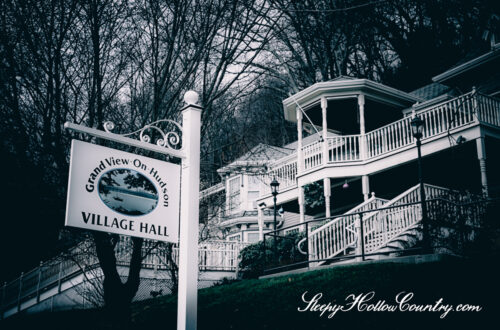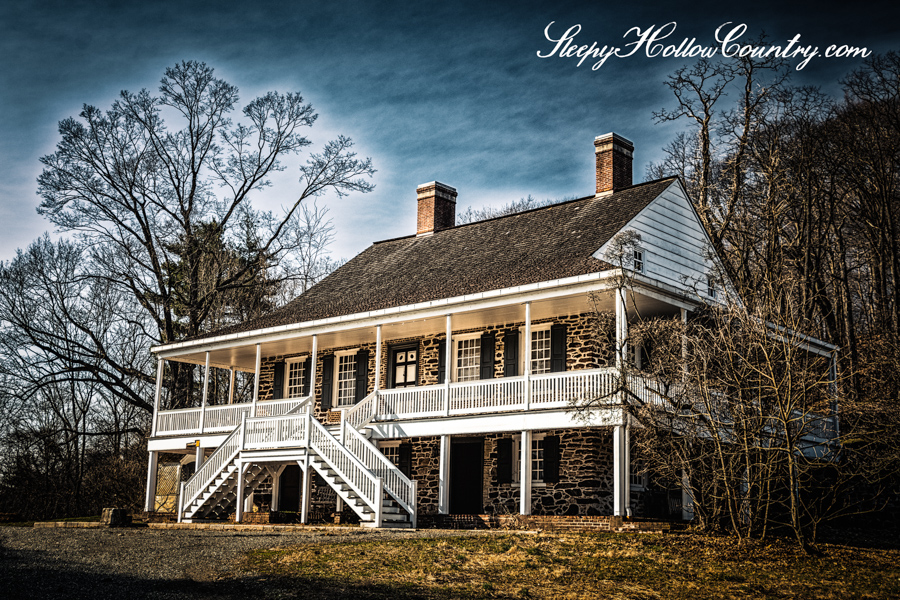
Van Cortlandt Manor
Just above the Philipsburg Manor’s northern boundary, at the junction of the Croton and Hudson Rivers, is another local representation of the early Dutch colonial period: Van Cortlandt Manor. The Van Cortlandt family established this massive 86,000-acre estate that was bounded to the west by the Hudson River, to the east by the borders of Connecticut, and stretching to the north 10 miles. Today, it is a National Historic Landmark with various architecturally significant buildings and landscapes.
Contents
First Lord of Van Cortlandt Manor
Stephanus Van Cortlandt was well-known historically as the first American-born, Dutch Mayor of New York City in the 17th century. His youngest sister’s second husband was Frederick Philipse, Patroon of Philipsburg Manor in the Sleepy Hollow region; it was a very close-knit, but widespread community of wealthy and socially important landowners.
In the 1660s, Stephanus’ estate had a low-walled fort or perhaps a frontier trading post, but as he began to acquire land in the 1680s, the first iteration of a manor house would take shape on the outpost foundation; although no one would reasonably reside there. It has been described as the family’s “hunting lodge”, a place of brief stays. In 1697, King William the III of England, also known as William of Orange, granted Stephanus a royal charter that named him a Patroon or Lord of all the land he had accumulated. As such he became the first Lord of the Van Cortlandt Manor.
During the late 17th century and into the mid-18th century, Van Cortlandt Manor had some additions of buildings and an expansion of the house, but the estate largely stayed undeveloped and underutilized by the Van Cortlandts. The Philipse brethren to the south at the time were running their healthy and critical trade and industry site, and much if not all commerce was still focused down in Manhattan. It wouldn’t be until the early to mid-1700s that Stephanus’ grandson, Pierre Van Cortlandt, would begin to make some serious changes and bring the Van Cortlandt manor up to the same speed as the rest.
Pierre Van Cortlandt Upgrades the Manor
In 1747, Pierre inherited the manor, being named its third Lord, and took up residence. Not wasting time, he began to diversify and develop the surrounding land into tenant farms and construct necessary amenities that would establish not only a wealth-building estate but a vibrant and self-contained community. Most importantly, he would also begin amending the manor house, which was vastly simpler than the Upper Mills Manor house in Sleepy Hollow, and the Philipse Manor Hall in Yonkers.
As mentioned previously, the original foundations of the house were likely some kind of frontier fort or trade post and constructed of logs or dry stone; likely one story backed into the hillside, and low ceilinged. Stephanus had built the structure up into something slightly more meaningful than the low fort, but what that looked like is ultimately unknown. Architectural historians think that Stephanus added a story, raised the roof, and added the veranda. Pierre was the one who made the more documented changes to the house. He updated interior finishes to accommodate living there full time, and he also raised the roof again to what is visible today: a sweeping flemish gambrel.
A ferry across the Croton River and an accompanying dock, an ice house, a smokehouse, a necessary (outhouse), a root cellar, cisterns, and gardens all completed the immediate property. A nearby blacksmith shop, oven kiln, fruit orchards, a dairy, a tavern, and a carpentry shop rounded out the community; all necessary components to allow not just the Van Cortlandts but the many tenant farmers the things they would need to survive and thrive.
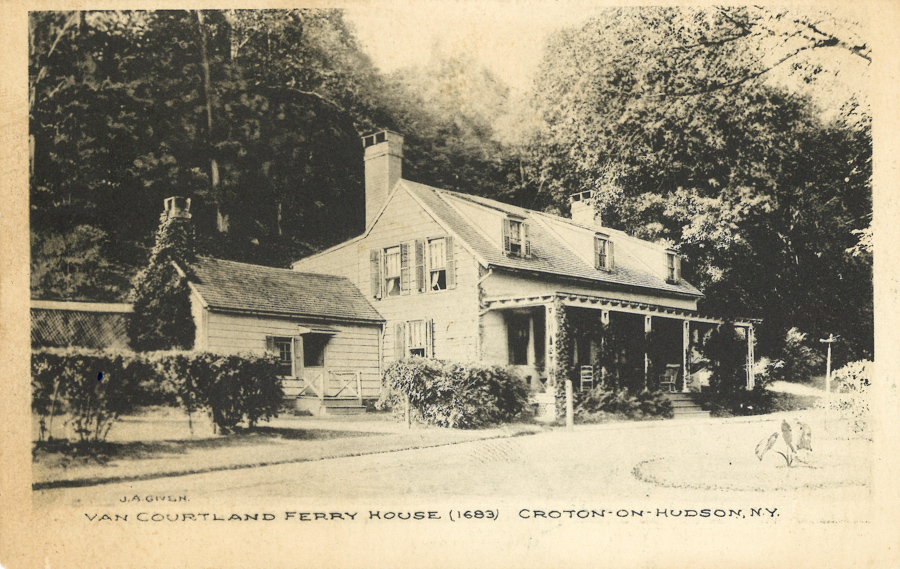
Van Cortlandt Manor during the Revolution
When the Revolution came, the Van Cortlandts were unlike the Philipses and sympathized with colonists and did so vocally. He was active socially as a politician, like his grandfather, and allowed the continental army and its militias to make use of its food stores and ample supplies. Pierre also invited many of the war’s famous colonial leaders to be guests at his table as he was the first Lieutenant Governor of New York from 1777 until 1795.
Unfortunately though for the Van Cortlandts, their support of the colonists put targets on their backs, and during the height of the conflict, they had to abandon the manor and find safer shelter from the British Army, which occupied New York City. The scavenging and hungry British Army quickly and thoroughly ransacked such a rich landscape like a cloud of locusts, and as such, the estate fell into ruinous disrepair.
Pierre and his wife, Joanna had eight children, one of which was Philip, who served in the Continental Army during the Revolution. He commanded a regiment, a battalion, and served on General Washington’s staff. He was at the decisive battle of Saratoga, suffered with Washington and the army at Valley Forge, led part of the devastating Sullivan Expedition in Central New York, and was at the victory at Yorktown.
Philip would return to Van Cortlandt Manor after the fighting had ended and alongside his sister Catherine, would rebuild the manor to its former glory. As such, it would become an important stopping point for travelers between New York and Albany. His aging father, Pierre, having since moved further north into the Hudson Valley to find respite, would not return until the beginning of the 19th century.
Transformation to Historic Museum
The manor stayed in the Van Cortlandt family until the 1940s. It was a shadow of its former self and the grounds lost some of the original outbuildings to accommodate more modern additions. John D. Rockefeller, Jr. purchased the property in the 1950s and like the many other historic sites he purchased during this period, was restored to its original colonial state and in the 1960s opened as a museum and historic site.
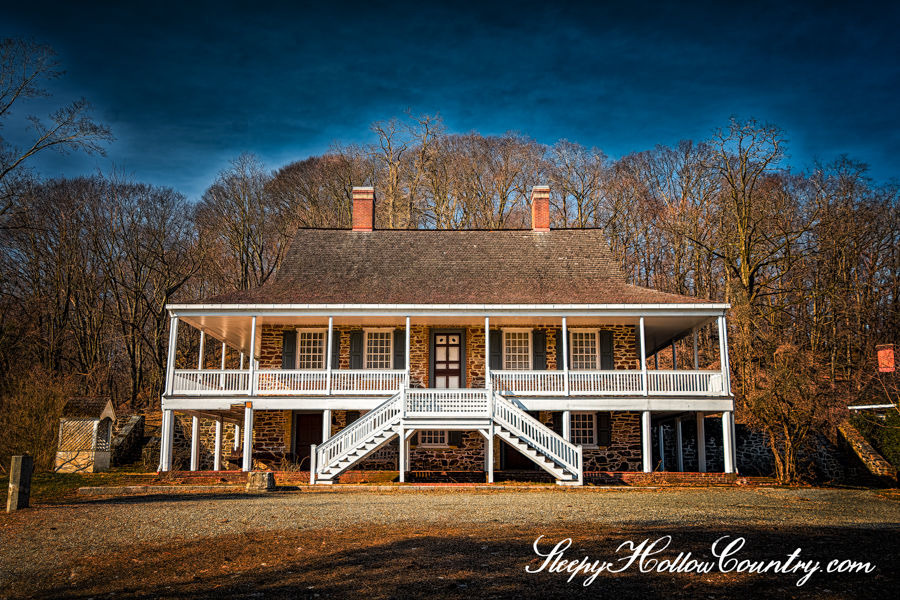
Today, the main attraction remains the iconic manor house, with its dual staircase and large veranda that gets the full Sleepy Hollow Country Halloween treatment in the Fall. The rest of the year, the site is representative of the heyday of Pierre and Joanna Van Cortlandt at the cusp of the American Revolution and its pivotal location on the mouth of the Croton River. Take a walk on these storied grounds and you’ll find that history appears to drip from the manor’s rafters, it’s entwined amongst the trees in the nearby woodland and rushes with the water of Croton River towards the majestic Hudson. It remains one of the few places to explore the deep past.
Perhaps if you’re lucky, you might also encounter a few ghosts.


